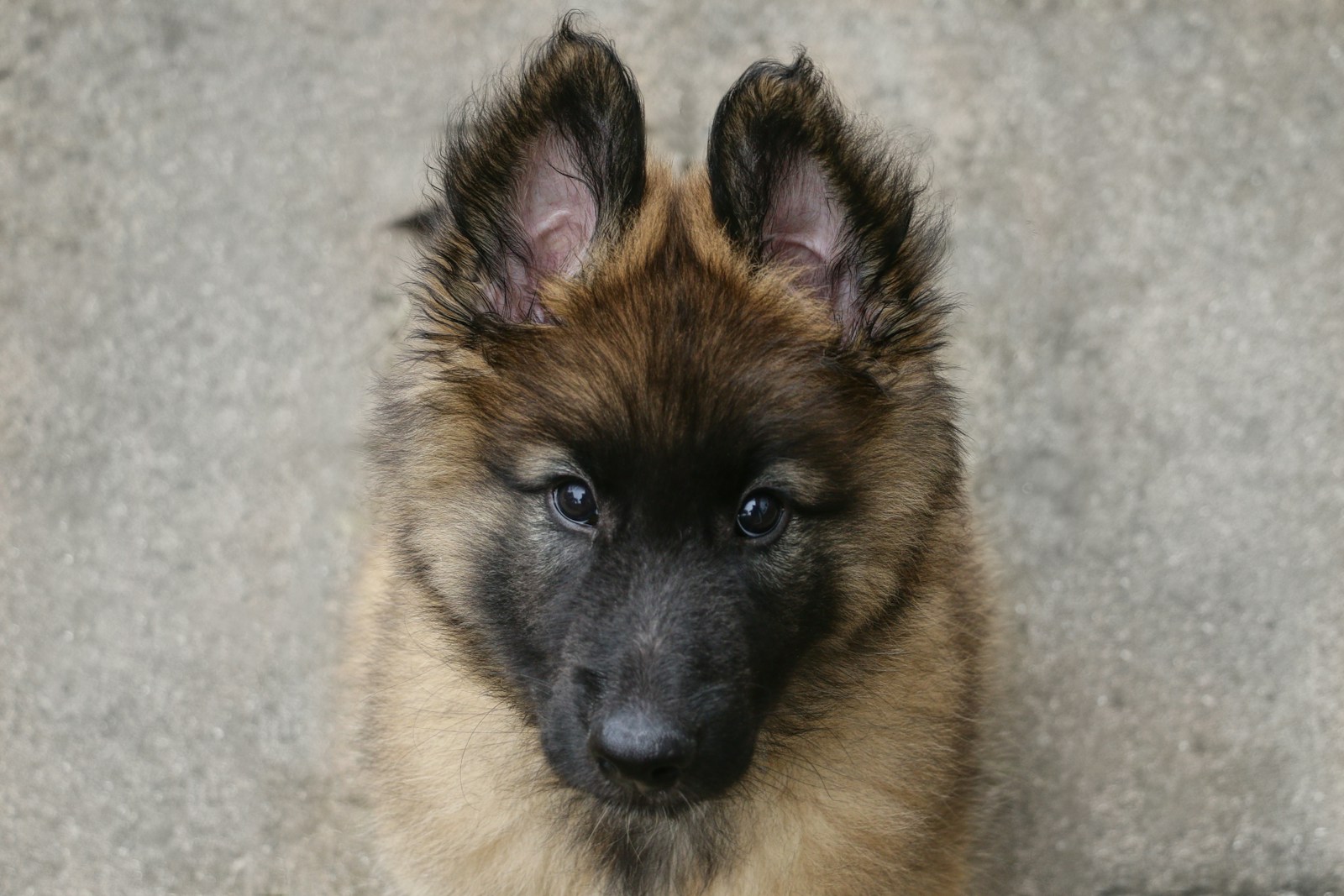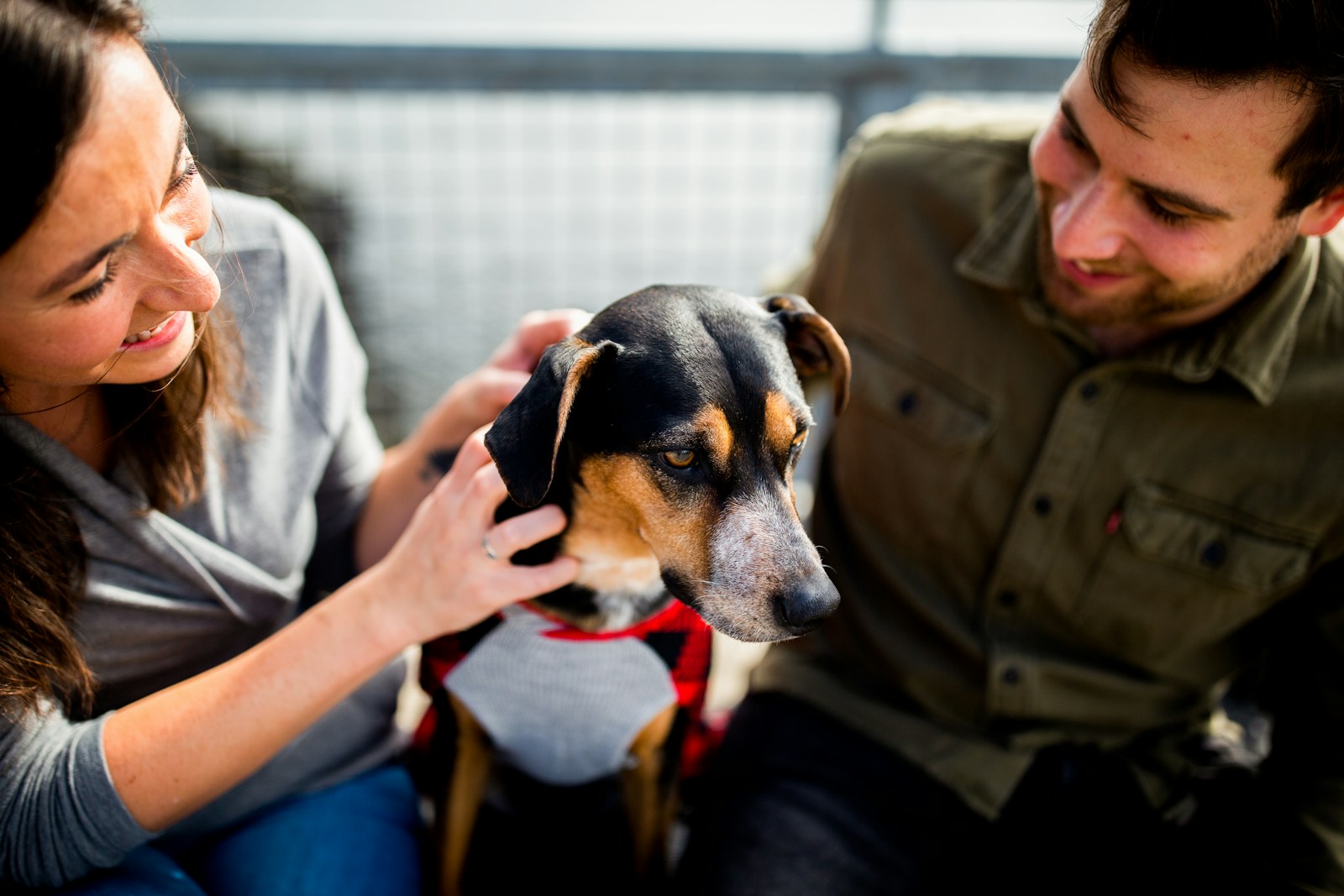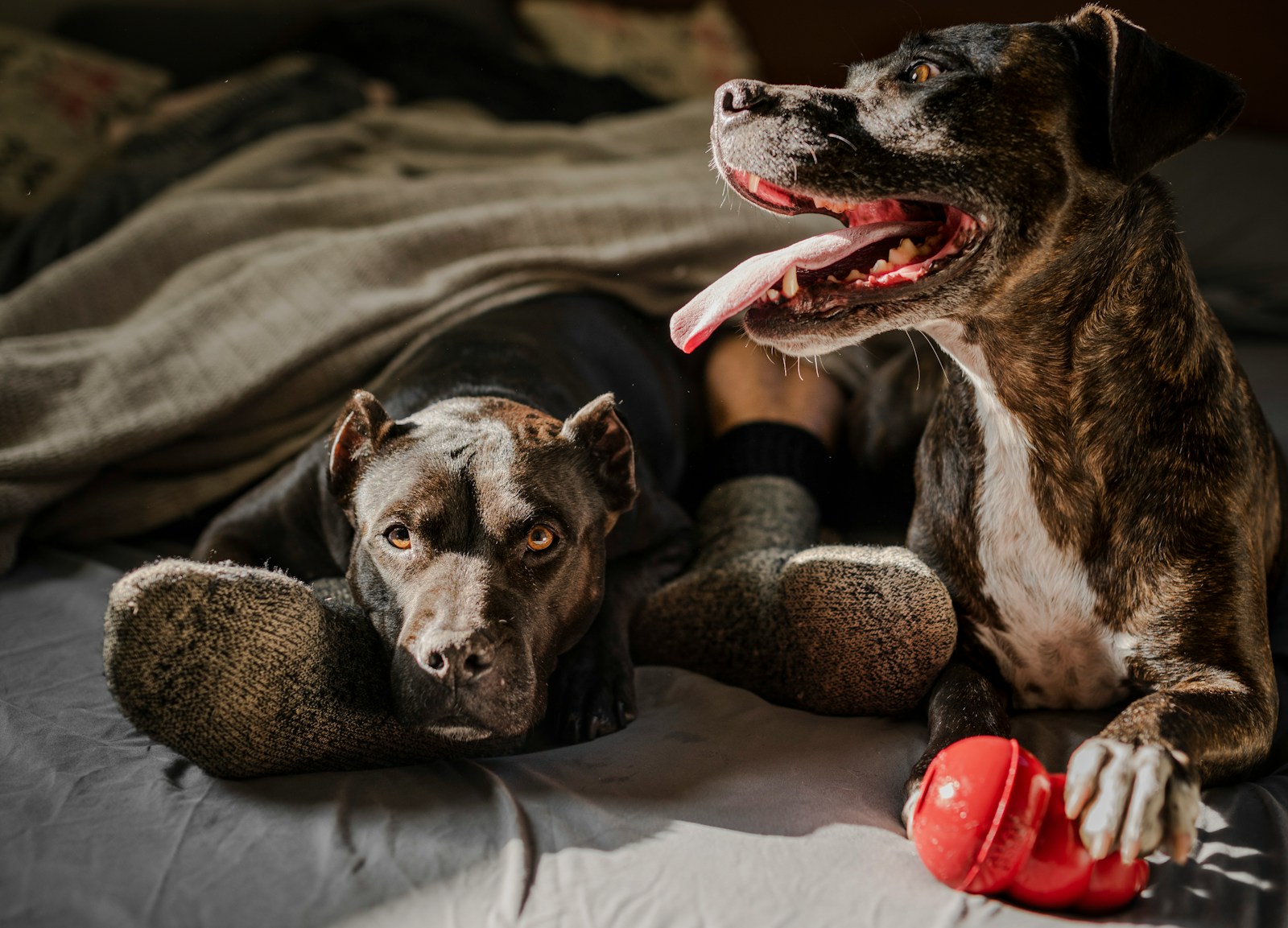Bringing a new puppy home is an exciting time. From their playful antics to their boundless energy, puppies bring joy to any household. But as you watch your furry friend grow, you might find yourself wondering, “When do dogs stop growing?” Understanding a dog’s growth process and how it varies based on breed size is key to ensuring your pup stays healthy and develops properly.
This guide will break down everything you need to know about dog growth, including timelines for different breeds, what impacts their growth, and how to support their development.
Benefits of Having a Dog
Having a dog as part of your family brings countless benefits that go far beyond the companionship they provide. Here are some of the incredible ways dogs can enrich your life:
Improved Mental Health
Dogs are natural mood boosters. Their playful and loving nature alleviates stress, reduces anxiety, and even eases symptoms of depression. The simple act of petting a dog can increase serotonin and dopamine levels, enhancing a sense of well-being.
Physical Fitness
Owning a dog often encourages an active lifestyle. Daily walks, runs, or playful sessions in the park not only keep your dog healthy but also help you maintain better physical fitness. Dogs are great workout companions!
Social Connections
Dogs are social magnets. Whether you’re at the dog park, in a training class, or walking around your neighborhood, they spark conversations and connections with other dog lovers. It’s a great way to meet new people and foster a sense of community.
Unconditional Love and Companionship
Dogs provide unwavering loyalty and affection. They are always there to greet you with excitement and offer comfort during tough times. Their companionship can reduce feelings of loneliness and help create a strong emotional bond.
Enhanced Security
Dogs are excellent protectors and can deter intruders, thanks to their natural alertness and protective instincts. They make many families feel safer at home, particularly larger breeds with a strong guarding nature.
Teaching Responsibility
For families with children, having a dog offers a wonderful opportunity to teach responsibility. Feeding, grooming, walking, and training a dog instills accountability and promotes empathy.
A dog’s presence truly transforms a household, filling it with love, laughter, and energy. No matter their breed or size, dogs enrich our lives in ways that are immeasurable.

Understanding Puppy Growth Phases
Understanding a puppy’s growth stages is essential for providing the right care and support as they develop into healthy and well-adjusted adult dogs. Here are the key stages of a puppy’s growth:
Neonatal Stage (0-2 Weeks)
During this stage, puppies are entirely dependent on their mother for warmth, nutrition, and survival. Their eyes and ears are closed, and they spend most of their time sleeping or nursing. Human interaction should be minimal during this phase to avoid unnecessary stress.
Transitional Stage (2-4 Weeks)
This is a period of rapid development. Puppies begin to open their eyes and ears, and their sense of hearing and vision starts to improve. They also start exploring the world, learn to stand, and take their first wobbly steps. Socialization with littermates begins during this stage.
Socialization Stage (4-12 Weeks)
This critical stage is essential for a puppy’s behavioral development. They become more curious, learn to interact with their environment, and develop social skills by playing with their littermates. Exposure to various people, sounds, and experiences is vital to ensure they grow into confident adult dogs. Vaccinations are also introduced during this time.
Juvenile Stage (3-6 Months)
Puppies gain energy and experience growth spurts during this phase. They may be teething, which can lead to chewing behavior. Basic training and consistency are crucial as their personalities continue to shape. Physical coordination also improves, allowing them to become more adventurous.
Adolescence (6-18 Months)
Adolescence can be a challenging phase for owners as puppies test boundaries and explore their independence. They are full of energy and sometimes display stubbornness. Continued training, firm guidance, and regular exercise help puppies transition smoothly into adulthood during this stage.
By understanding these stages, pet owners can adapt their care and training methods to meet their puppy’s specific developmental needs, ensuring they grow up happy and healthy.
When Do Small, Medium, and Large Dogs Stop Growing?
The rate at which a puppy grows into an adult dog depends heavily on its breed size. Here’s a quick breakdown of what to expect:
Small Breed Puppies
Small breeds, such as toy breeds like Chihuahuas and Pomeranians, grow rapidly and stop growing around 9 to 12 months of age. Since they have smaller bones that require less time to fully develop and harden, their growth plates close earlier compared to larger breeds.
Medium Breed Puppies
Medium breeds, like border collies, tend to grow slightly slower than small breeds. They typically reach their adult size between 12 and 18 months, but some may take a bit longer to develop muscle and reach full maturity.
Large and Giant Breeds
Large breeds, such as Golden Retrievers, and giant breeds, like Great Danes, grow at a much slower pace. On average:
- Large breeds stop growing fully between 18 and 24 months.
- Giant breeds can take up to 24 to 36 months to reach their final size. These breeds often grow at a slower rate, allowing their bigger bones and muscles to develop gradually, ensuring strong and healthy bodies.
Factors Affecting a Dog’s Growth
Several factors can influence how quickly or slowly a dog grows. Taking these into account allows you to provide your pup with the right support at each stage of its development:
1. Breed Size
The most significant factor is the dog’s breed size. Generally, smaller dogs grow faster and reach their adult size sooner, while larger dogs take longer as their bodies need more time for their bones and muscle development.
2. Nutrition
Proper nutrition is crucial during a puppy’s growth phase. Puppies need food specifically designed to provide all the nutrients they require, including proteins, fats, vitamins, and minerals. Following nutritional guidelines ensures they develop strong bones and maintain overall health. Avoid overfeeding, as excessive weight gain can lead to health issues and put undue stress on their growing joints.
3. Exercise and Environment
Exercise is essential to muscle development and maintaining a healthy weight, but too much exercise on hard surfaces can damage growth plates, especially for larger puppy breeds. Make sure your puppy gets moderate exercise on softer surfaces, along with mental stimulation, to help them grow strong and stay healthy.
4. Genetics
A puppy’s genetics play a big role in determining its growth rate and final size. Purebred puppies generally have predictable growth patterns, but mixed breed dogs may follow an unpredictable timeline depending on their genetic makeup.
5. Overall Health
Health issues during the puppy phase, such as malnutrition or illness, can impact a dog’s growth and development. Regular check-ups with a veterinarian can help address any red flags before they become significant problems.
Puppy Growth Chart by Breed Size
While every dog develops at its own pace, this chart provides a general timeline of growth milestones based on breed size:
|
Breed Size |
When Growth Begins to Slow |
When Fully Grown |
|---|---|---|
|
Small Breeds |
~6-9 months |
9-12 months |
|
Medium Breeds |
~8-12 months |
12-18 months |
|
Large Breeds |
~12-18 months |
18-24 months |
|
Giant Breeds |
~18-24 months |
24-36 months |
Note that male dogs and female dogs may grow at slightly different rates, with males often taking longer to develop muscle and reach their adult size.
Frequently Asked Questions About Dog Growth
When Do Puppy Teeth Fall Out?
Puppy teeth typically start falling out between 3 and 6 months of age, making way for adult teeth. By around 7 months, most dogs will have their full set of adult teeth.
How Do I Know When My Dog Has Stopped Growing?
Once the growth plates close and harden, your dog has reached its full adult size. A veterinarian can confirm this with X-rays if you’re uncertain.
Can Too Much Exercise Stunt My Puppy’s Growth?
While exercise is important for a growing puppy, overdoing it can damage their growth plates, especially for larger dogs. Ensure your pup’s activities are appropriate for their age and breed.
Do Mixed Breed Dogs Grow Differently?
Mixed breed dogs may have unpredictable growth patterns, but their timeline often depends on the dominant breed in their genetic makeup.
Helpful Resources for Understanding Dog Growth
Here are seven valuable resources and websites that provide in-depth information on dog growth, development, and care:
American Kennel Club (AKC)
The AKC offers comprehensive guides on puppy development, training, and breed-specific care.
The Humane Society of the United States
This nonprofit provides guidance on responsible pet ownership, including puppy care tips.
Visit The Humane Society Website
ASPCA – Pet Care
The ASPCA has detailed resources on dog behavior, nutrition, and developmental milestones.
Visit ASPCA Dog Care Resources
Vetstreet
Vetstreet delivers expert advice on dog health, training, and the stages of puppy growth.
Pets WebMD
This trusted resource offers articles on dog life stages, medical care, and behavioral training.
Whole Dog Journal
A subscription-based resource that features natural and holistic care tips for dogs, including puppy training techniques.
AVMA (American Veterinary Medical Association)
The AVMA provides credible veterinary-backed information on a wide range of dog health and developmental topics.
These resources offer valuable insights to help owners better understand their dog’s developmental stages, ensuring they can provide the care and guidance their furry companions need.
Supporting Your Growing Puppy for a Healthy Life | When Do Dogs Stop Growing
Watching your puppy grow is one of the most joyful parts of dog ownership. Knowing when your dog will stop growing, and understanding how to support their physical and mental development, ensures they grow into a happy, healthy adult dog.
Key takeaways:
- Small breeds grow quickly and stop around 9-12 months.
- Medium breeds take 12-18 months, while large breeds need 18-24 months.
- Giant breeds require the most time, taking up to 36 months to reach full size.
Take advantage of resources like growth charts, and don’t hesitate to consult your veterinarian to track your puppy’s growth and address any concerns.

Whether your pup is a Great Dane with giant paws or a Pomeranian no larger than a little ball, each growth phase is worth celebrating!! Stop by Snouts and Stouts Indoor Dog Park and Bar!






